Type Major | Movement north-west | |
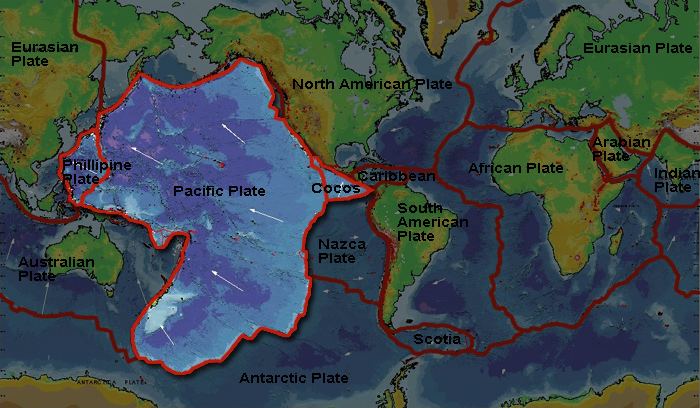 | ||
Approximate area 103,300,000 km (39,900,000 sq mi) Speed 56–102 mm (2.2–4.0 in)/year Features Baja California, Hawaii, New Zealand, Pacific Ocean | ||
The Pacific Plate is an oceanic tectonic plate that lies beneath the Pacific Ocean. At 103 million square kilometres (40,000,000 sq mi), it is the largest tectonic plate.
Contents
- Awestruck earthquakes and flooding as pacific plate twists and cracks
- Boundaries
- Paleo geology of the Pacific Plate
- References
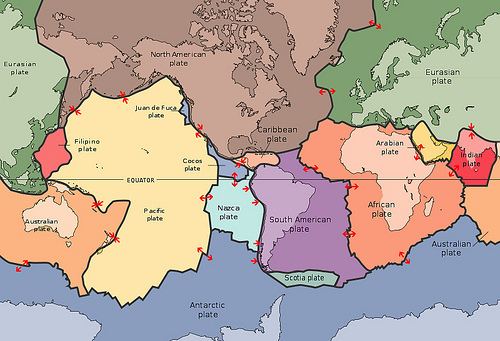
The Pacific Plate contains an interior hot spot forming the Hawaiian Islands.
Hillis and Müller are reported to consider the Bird's Head Plate to be moving in unison with the Pacific Plate. Bird considers them to be unconnected.
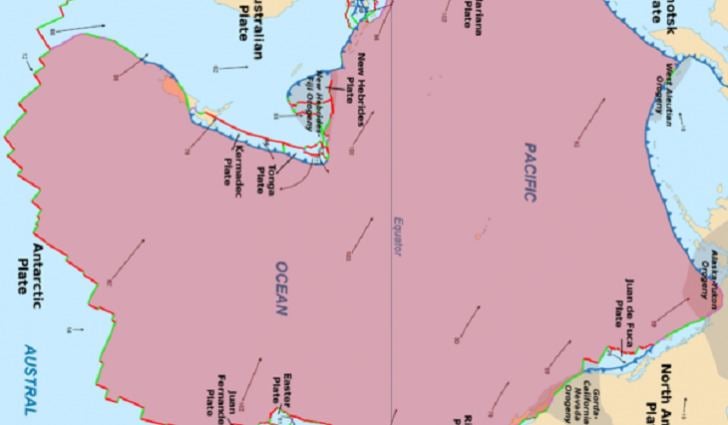
Awestruck earthquakes and flooding as pacific plate twists and cracks
Boundaries
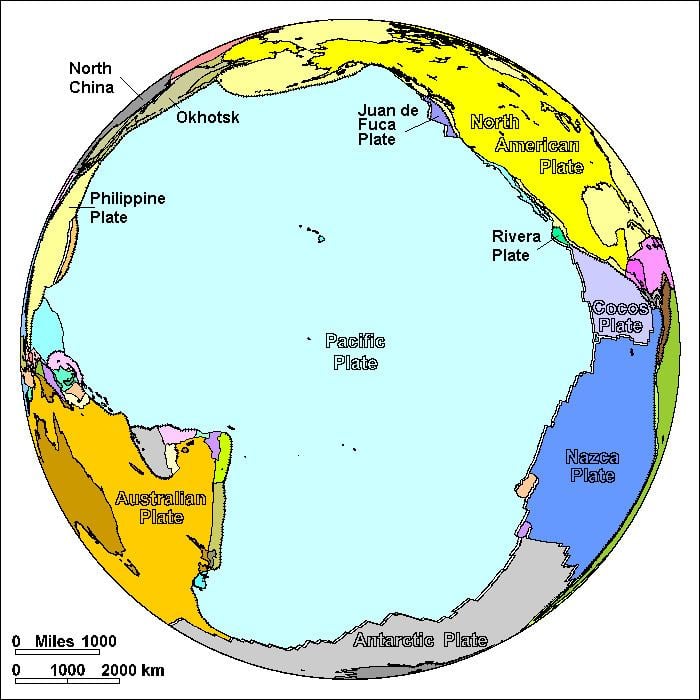
The north-eastern side is a divergent boundary with the Explorer Plate, the Juan de Fuca Plate and the Gorda Plate forming respectively the Explorer Ridge, the Juan de Fuca Ridge and the Gorda Ridge. In the middle of the eastern side is a transform boundary with the North American Plate along the San Andreas Fault, and a boundary with the Cocos Plate. The south-eastern side is a divergent boundary with the Nazca Plate forming the East Pacific Rise.
The southern side is a divergent boundary with the Antarctic Plate forming the Pacific-Antarctic Ridge.

The western side, the plate is bounded by the Okhotsk Plate at the Kuril-Kamchatka Trench and the Japan Trench, forms a convergent boundary by subducting under the Philippine Sea Plate creating the Mariana Trench, has a transform boundary with the Caroline Plate, and has a collision boundary with the North Bismarck Plate.
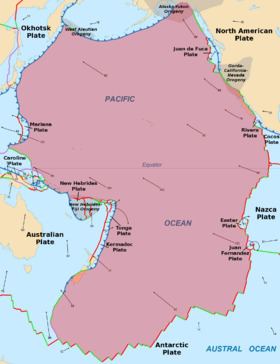
In the south-west, the Pacific Plate has a complex but generally convergent boundary with the Indo-Australian Plate, subducting under it north of New Zealand forming the Tonga Trench and the Kermadec Trench. The Alpine Fault marks a transform boundary between the two plates, and further south the Indo-Australian Plate subducts under the Pacific Plate forming the Puysegur Trench. The southern part of Zealandia, which is to the east of this boundary, is the plate's largest block of continental crust.
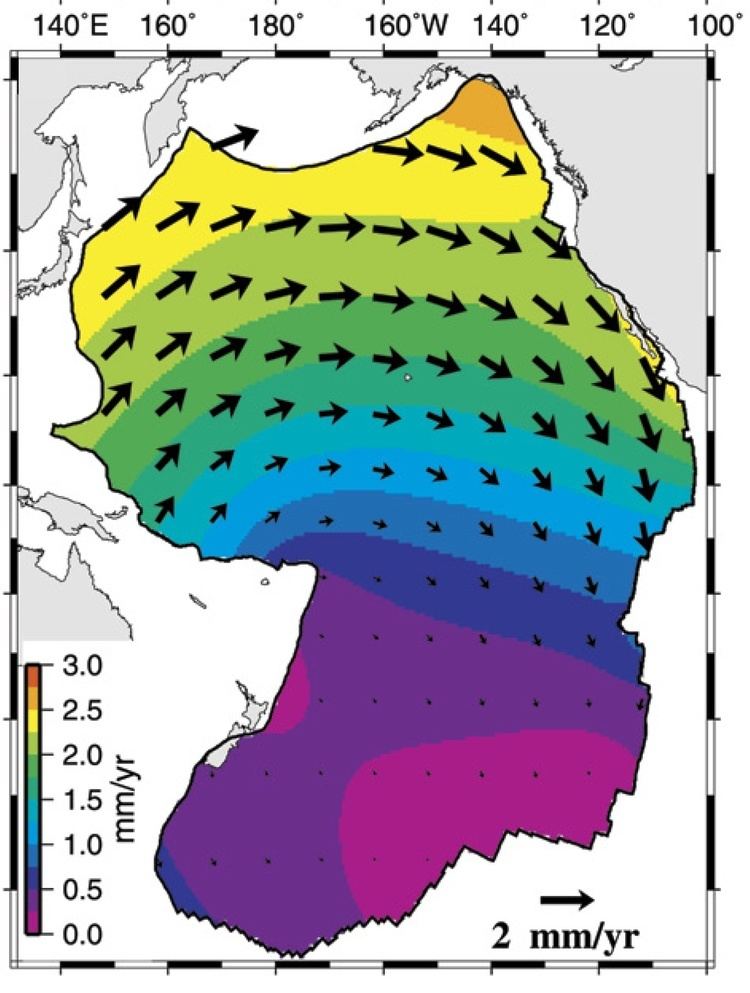
The northern side is a convergent boundary subducting under the North American Plate forming the Aleutian Trench and the corresponding Aleutian Islands.
Paleo-geology of the Pacific Plate
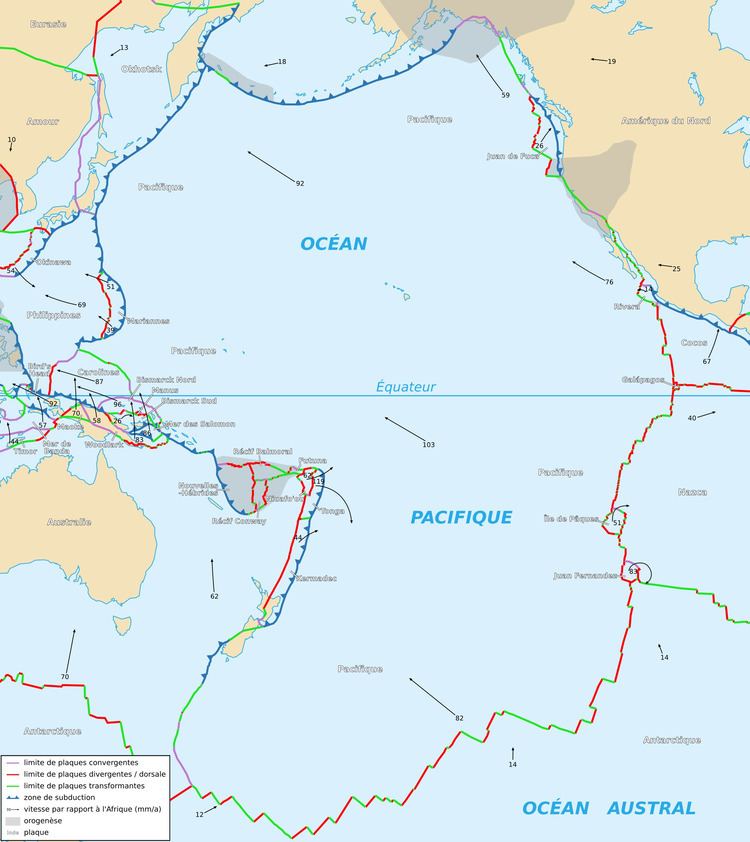
The Pacific Plate is almost entirely oceanic crust, but it contains some continental crust in New Zealand, Baja California, and coastal California.
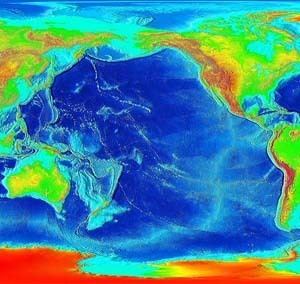
The Pacific Plate has the distinction of showing one of the largest areal sections of the oldest members of seabed geology being entrenched into eastern Asian oceanic trenches. A geologic map of the Pacific Ocean seabed shows not only the geologic sequences, and associated Ring of Fire zones on the ocean's perimeters, but the various ages of the seafloor in a stairstep fashion, youngest to oldest, the oldest being consumed into the Asian oceanic trenches. The oldest member disappearing by way of the Plate Tectonics cycle is early-Cretaceous (145 to 137 million years ago).
All maps of the Earth's ocean floor geology show ages younger than 145 million years, only about 1/30 of the Earth's 4.55 billion year history.
